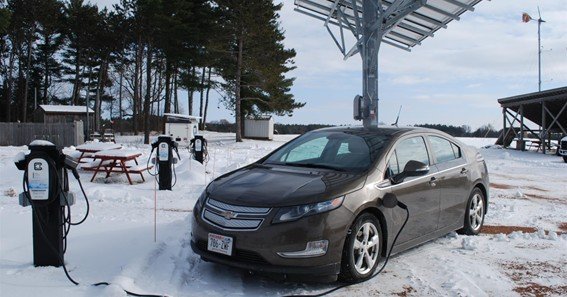Despite the deterioration in dynamics, sales of electric cars are in full swing, and many owners have already spent their first winter behind the wheel of a full-size electric pickup Ford F-150 Lightning. Obstacles like snow and ice are no problem, but extremely low temperatures, for obvious reasons, do not increase the mileage. Experts from the Indy Auto Man Ford dealership explain what the manufacturer advises drivers in this case.
Ford EV lineup
Ford Motor Company’s history of vehicle electrification spans nearly two decades. Since 2000, Ford has been actively developing and producing hybrid cars with gasoline and electric engines. Over time, the manufacturer has expanded its range of EVs to include models with fully electric engines (Battery Electric Vehicles, BEVs).
Ford currently produces several electric models:
- The all-electric Ford Mustang Mach-E crossover was introduced in 2020. It is available in various configurations, including rear-wheel drive and all-wheel drive. The Mach-E has a stylish design, powerful performance, and a range of up to 186 miles on a single charge.
- The Ford F-150 Lightning is the first electric pickup truck by Ford, introduced in 2021. This truck guarantees an impressive range according to the EPA cycle – 300 miles – and is considered one of the best electric cars for rural areas.
- The hatchback Ford Focus Electric was introduced in 2011. The vehicle offers environmental friendliness while maintaining the performance and comfort of the classic Focus model.
- The Ford Escape Plug-in Hybrid crossover first appeared in spring 2020 and has already gained popularity in the US market.
- The Ford E-Transit electric van was designed for urban deliveries and business.
Ford’s electric models typically feature lithium-ion batteries, which provide high energy efficiency and reliable performance. These batteries come in several capacities and configurations, depending on the vehicle model and range requirements.
Why do problems arise?
One of the problems electric car owners regularly face in winter is a drop in battery charge caused by the chemical composition of battery cells. As soon as the temperature drops, the electrolyte liquid becomes sluggish. At least, that’s how Ford describes it. Ultimately, this limits the power and speed of charging. Of course, the company knew about this, and during a long testing period, they made sure that batteries were designed for the most extreme temperatures.
With winter taking over, Ford has issued recommendations for owners to help them extend their batteries’ range.
Steps to extend battery life
- First and foremost, park in a garage or underground car park if possible, and always plug into a charger.
- Using heated seats and steering wheel as the main heat source will reduce the energy consumption of the air conditioning system. Also, owners should make sure to turn off the heater while charging or at least reduce its temperature. This is especially important when using DC fast charging.
- Clear snow off the car before driving to remove unnecessary load and resistance.
- Keep the vehicle speed low, as high speeds will consume more energy.
- Finally, and this applies to any vehicle, make sure the tire pressure is correct.
A slightly reduced range is possible in winter, so owners should not panic when they see their charge running low. Otherwise, the electric F-150 is every bit as good as the gas-powered version, and changing your parking and driving habits will help make up the difference, Ford says.










